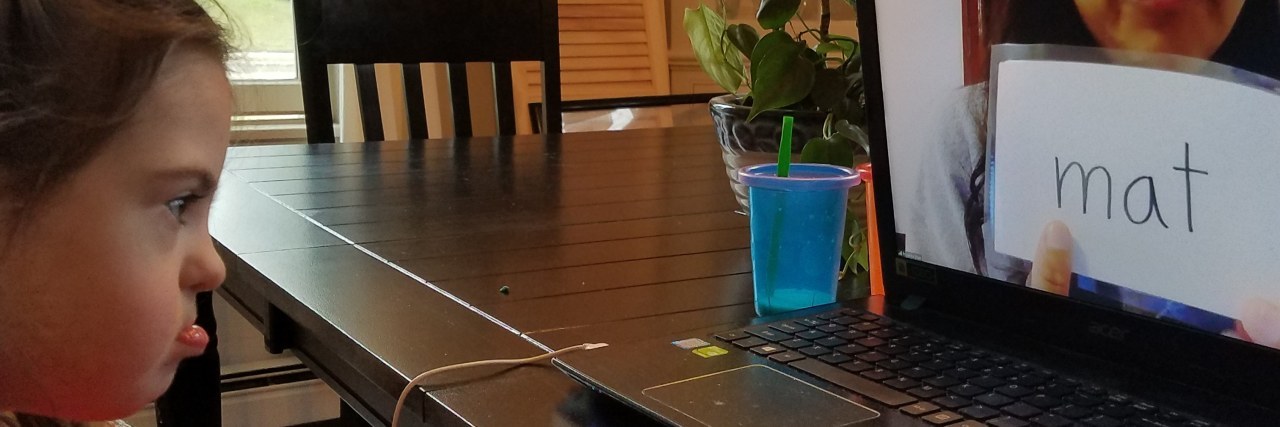6 Online Therapy Tips for Preschoolers With Disabilities During COVID-19
Editor's Note
Join The Mighty’s Coronavirus group to connect with other Mighties living through the pandemic. Read the latest updates, share helpful tips, or give and receive virtual support.
It’s been over a month of learning from home for most of the country and it hasn’t been easy for just about anyone. This includes preschoolers with disabilities, who are not only trying to keep up with typical schoolwork, but also trying to receive therapies such as occupational therapy and speech therapy.
These sessions, which are now being given over live video on the family computer, are a far cry from what the students are used to doing. Therapy often relies on in-person, face-to-face contact to keep the child engaged. It has been a struggle to keep my child engaged for sometimes very long 30-minute class meetings and therapy over a computer. Some school districts are only just beginning to attempt sessions via computer apps such as Zoom. Others, sadly, haven’t even made an attempt. After four weeks for my child with Down syndrome, and numerous occupational therapy, speech, teacher, and whole-class online meetings, I’ve learned a few tips to help those just getting started.
1. Schedule the session at a time that works for your child.
At first, I was accepting any meeting time offered, not thinking my child would be tired or hungry for lunch. I realized she’s happier and much more attentive right after breakfast or lunch, so I start by recommending those times first. If there is limited or no flexibility for picking a meeting time (such as with class meetings), maybe having your child have a snack or rest before the meeting would better prepare them to stay focused.
2. Give your child a heads up.
If you can work with the therapist or teacher on a plan for the meeting, or at least an idea of what will be happening in the session, you can relay that to your child so they are not surprised. Knowing what’s ahead can give them more of a sense of security. Checking off each item as the meeting progresses can help them understand where they are in the session.
3. Seat your child in a place they can’t easily leave.
At first, we had meetings on the couch. This whole thing was new and interesting to my child, so she was engaged. After two sessions, the novelty wore off and she was excusing herself to get a toy, doll or book. We also attended meetings from the kitchen floor and the play tent. The table where her booster seat is seems to be working since she is appropriately seated and supported, not to mention that’s the most difficult place for her to leave.
4. Allow for a break.
If you think your child will benefit, schedule a five-minute break as long as you can easily get them back and engaged in the session.
5. Plan a fun activity for after the session.
Plan a fun activity for after the session and tell them what the plan is, so they have a reward to look forward to after the meeting.
6. Know when enough is enough.
Therapy via social distancing may not work and that’s OK. I’ve talked to many moms who have tried it and are just not doing it anymore because it didn’t work for their child. In all likelihood, your child is still being exposed to stimuli and even doing things that may be different from what they would be doing at school. If they are active, interested, and taking part in family activities, they’re learning!
For more on parenting during quarantine, check out the following stories from our community:

